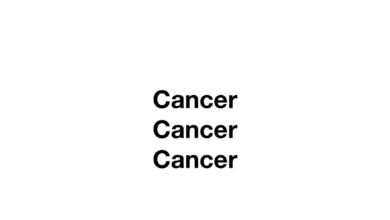STOOL-BASED SCREENING FOR COLORECTAL CANCER

If you’re over age 45, or even 50, and know you should have a colonoscopy but haven’t, you have several options for screening for colorectal cancer. If you’re scared to death of the idea of having a colonoscopy, there are simple and accurate tests you can do on your stool material to screen for cancer.
Colonoscopy is “the gold standard” of diagnostic screening tests for colorectal cancer (CRC). It is the definitive test everyone over age 45 years should have. It’s absolutely necessary for any patient with a personal or family history of CRC, polyps, inflammatory bowel disease, rectal bleeding, or an “inherited cancer syndrome.”
There are three alternative tests available. Each is done to screen for microscopic amounts of blood in the patient’s fecal material. If this test is positive for blood, it should be followed up with a colonoscopy. The three tests are as follows:
1. High-sensitivity guaiac fecal occult blood test—gFOBT.
2. Fecal immunochemical test—multitarget stool DNA test—s-DNA-FIT
3. Fecal immunochemical test (FIT)
Each of these tests is highly sensitive for detecting blood in one’s fecal material and when positive, is highly specific (reliable) that the blood is coming from a colorectal cancerous lesion.
The high sensitivity and specificity of these tests reassures physicians and patients of the reliability of the results. Positive results should always be followed by a diagnostic
colonoscopy.
Next, I will briefly discuss each of the fecal occult blood testing methods.
High-sensitivity guaiac fecal occult blood test (gFOBT):
This test detects the presence of “heme” in the stool. It is done by smearing feces on a
special paper then placing a few drops of testing solution on the paper. Positive results are
a blue, ink stain on the paper extending from the feces. Stool samples acquired from 3
consecutive bowel movements are mailed to a lab or the doctor’s office for testing.
SENSITIVITY: 90%-100%
SPECIFICITY: 95%-99%
Immunochemical test multi-target stool DNA test (s-DNA-FIT): Cologuard
This test detects the presence and concentration of hemoglobin in feces, and detects DNA
biomarkers for cancer in cells that are shed into the stool from the colon lining. The test
requires a prescription. A single, small stool sample is collected “in a bucket” that contains
a chemical that preserves DNA for testing later.
SENSITIVITY: 87%-100%
SPECIFICITY: 84%-86%
Fecal Immunochemical test (FIT):
This test detects human hemoglobin in the stool. A small stool sample is collected in a
container that is mailed within 24 hours of collection for testing.
SENSITIVITY: 64%-84%
SPECIFICITY: 93%-96%
The major difference in these three occult blood testing methods is the chemical used to detect blood or material in the blood detected by the test. There’s also a major difference in cost of testing as well.
PROS and CONS of these tests:
EASIEST and QUICKEST: FOBT—can be done on stool obtained by the doctor during a
digital rectal exam.
HIGHEST SENSITIVITY: Guaiac Fecal Occult blood test (gFOBT). False positives are caused
by other drugs, vitamins, rare meat.
HIGHEST SPECIFICITY: Guaiac FOBT
HIGHEST COST: s-DNA-FIT—$509!
My routine practice was to perform gFOBT on any patient who had a physical exam or on whom I did a rectal exam for any reason. FOBT is quick and simple. My nurse would place the test card and solution where I could easily use it. We also gave anyone having a physical the test cards ahead of their appointment to obtain feces from 3 consecutive BM’s. The patient brought them to their appointment for us to apply testing solution.
The author of the reference cited did not recommend one testing method over another. gFOBT used to be available OTC at CVS, but a search of CVS products revealed only the FIT test was offered. The s-DNA-FIT test requires a prescription, is costly, and is no more sensitive than gFOBT. Specificity, or the accuracy of a positive test actually being blood, is best with gFOBT. The newer testing methods really aren’t any more advantageous and cost more.
Fecal occult blood testing is a reliable and effective screening method for colorectal cancer; especially for people who refuse colonoscopy. BUT any positive result must be followed by a colonoscopy as soon as possible. To not do a colonoscopy when a patient’s stool is heme positive is negligence and malpractice. The number of people diagnosed with CRC by colonoscopy justifies and verifies the importance of this procedure. Ideally, everyone age 45 and above should have a colonoscopy. If they did, many lives would be saved.
Reference: Carethers JM. Stool-Based Screening Tests for Colorectal Cancer. JAMA 2023 March 14;329((10):839-840.





Is there a top age level where such tests are no longer performed or needed?
I have had 2 Drs tell me that 75 is the cutoff age.
Eric, Usually, it is 75, ,but is that, then, the end of life? I once had a 93 yo man develop colon cancer from which he died. Had he had screening after 75 there’s a good chance that cancer would have been found, and something else would have caused his death. It’s a deep philosophical discussion about the age to stop. Quality of life at 93 is poor for most people, usually. My last colonoscopy was in 2015. Will I have one in 2025? I don’t know. Bill